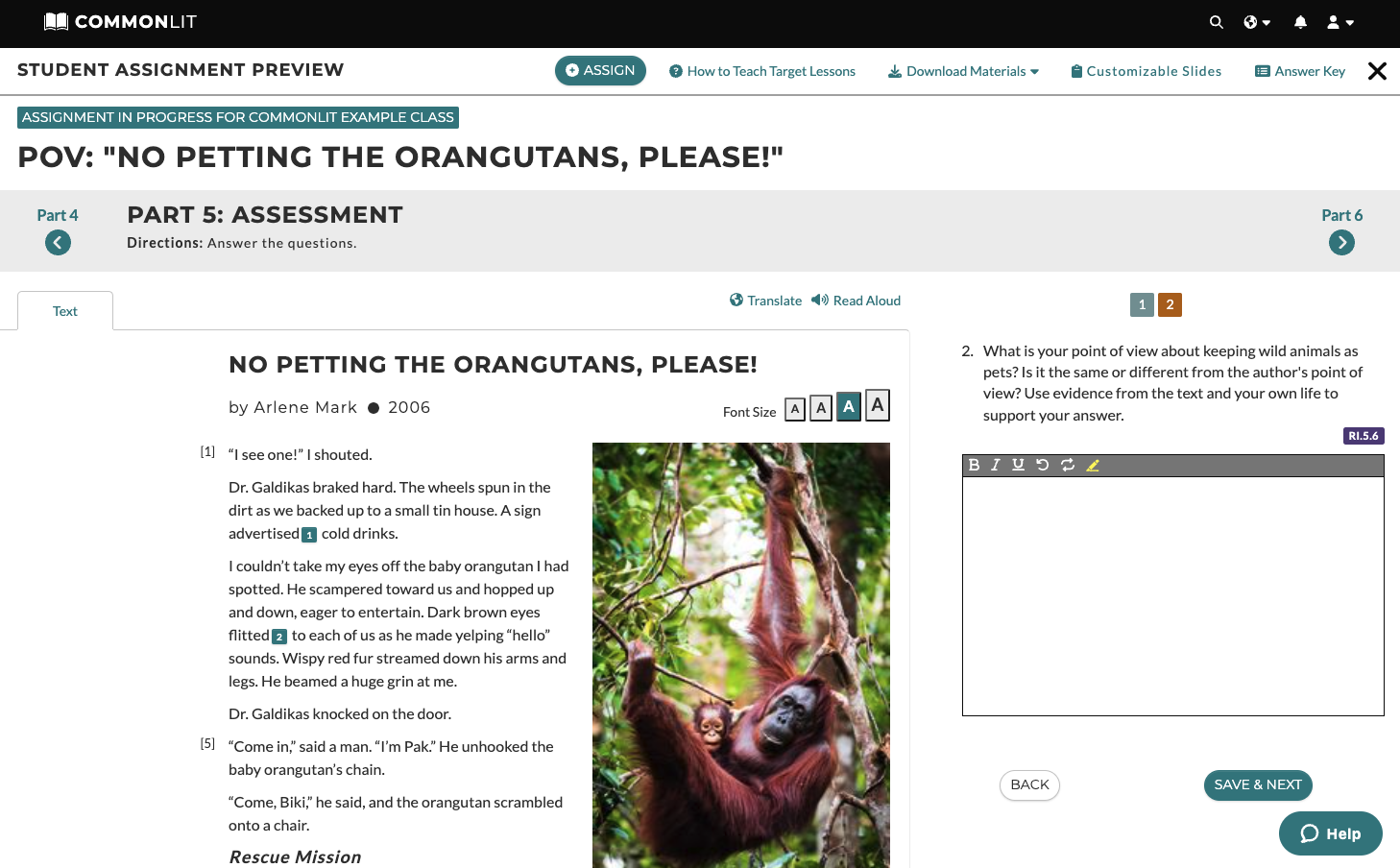 Elementary Classrooms
Target Lessons
7 Brand-New Elementary Target Lessons To Help Students’ Reading Comprehension
Elementary Classrooms
Target Lessons
7 Brand-New Elementary Target Lessons To Help Students’ Reading Comprehension
Engage students while they learn critical reading comprehension skills, including finding the main idea, analyzing character change, finding the meaning of unknown words and more.
Target Lessons are easy-to-use, highly engaging lessons that teach students critical reading comprehension skills for both fiction and nonfiction texts. Each lesson includes scaffolded Pre-Reading, During Reading, and Post-Reading activities that will build student engagement and knowledge as they complete the lesson. Additionally, Target Lessons are based on high-interest topics that will hook students as they hone standards-based skills.
Target Lessons can fit flexibly into your classroom. They can be used to introduce a new skill to the whole class, or as a form of reading intervention. If teachers notice students struggling with specific standards, they can assign a Target Lesson to reteach or remediate this skill gap.
Recently, dozens of elementary Target Lessons have been added to our library. Target skills include finding the main idea, identifying the author’s point of view, analyzing character change, finding the best evidence and more! In this blog post, I’m going to highlight some exciting new Target Lessons on our library.
Finding the Main Idea with “What Is a Spacewalk?” (3rd Grade)
Students will read about the purpose of spacewalks and how astronauts keep safe during them. As they read, students will practice identifying main ideas.
Students will engage in a picture study and watch a short video to learn the target skill. Then, students will answer during reading questions which ask them to find the main idea of each section, and find key details that support the main idea of a paragraph or section.

Analyzing Text Structures with “Flopping Frogs” (3rd Grade)
Students will read about the tailed frog of the Pacific Northwest and why it does not hop like other frogs. Simultaneously, students will practice analyzing text structure by paying attention to the purpose of each section and how paragraphs connect to one another.
The questions start simple and get increasingly difficult as students practice the target skill. For example, the first multiple choice question asks, “What is the purpose of paragraph 1?”

By the end of the lesson, students will demonstrate mastery of the skill by answering an open response question: “Imagine the author is going to add one more section to the end of this article. Which of the subheadings below would fit best with the article? Why?
-Unusual Animals You Can Find at the Zoo
-How to Have a Tailed Frog as a Pet
-The Future of Tailed Frogs”
Analyzing Character’s Point of View with “The Kids’ Table” (4th Grade)
This fiction Target Lesson focuses on a boy named James who does not want to sit at the kids’ table for Thanksgiving this year. As students read, they will practice analyzing a character's point of view. Students will answer a written question about their family’s holiday traditions before watching a short video introducing the skill.
Then, students will test their understanding of the target skill by answering questions about the varying points of view James, his mom, and the other kids have throughout the text.
Analyzing Character Change with “Mo of the Mudflat” (4th grade)
In this fiction story, a girl named Salma moves to a new home near a mudflat. Students will watch a short video teaching them how to analyze character change in a fiction text.
Students are instructed to pay attention to what a character is doing, saying, and thinking to make inferences about how a character is feeling. They will apply this skill during the culminating assessment, which asks students, “How do Salma’s feelings change throughout the story?”
Author’s Point of View with “No Petting the Orangutans, Please!” (5th Grade)
In this lesson, students will learn about orangutans while they practice analyzing the author’s point of view.
Students will watch a short video about orangutans and learn what a point of view is. Then, they will read the passage and apply the target skill to answer the culminating assessment question: “What is your point of view about keeping wild animals as pets? Is it the same or different from the author’s point of view?” This question also allows students to make text-to-self connections.

Finding the Best Evidence with “Tornado Coming!” (5th Grade)
In this fiction Target Lesson, students will read about a boy named Matt who helps his elderly neighbor during a tornado. A short video explains that to find the best evidence, students should pay attention to what a character is doing, thinking, or feeling to make inferences about a story.
Students will answer two-part multiple choice questions about the text where they are instructed to highlight the best evidence to support their answer. For example, Question 4 asks: “How does Mrs. Laney feel when Matt comes to help her?” This is followed up by Question 5: “Which detail best supports the answer to question 4?” These questions are a great way to ensure that students are able to back up their arguments with evidence.
Finding the Meaning of Unknown Words with “Sharks: Monsters or Misunderstood?” (Grade 5)
In this lesson, students read about sharks’ biology and behavior. As students read, they will practice how to use context clues to find the meaning of unknown words and phrases in a text.
Throughout the reading, students will work through multiple choice and short answer questions asking them to identify words or phrases in a text. For example, Question 3 asks students: “What does the phrase ‘particularly vulnerable to overfishing’ reveal about the threat facing sharks?”

Next Steps
Looking for more engaging lessons to build knowledge and skills? Explore our full library of Target Lessons here!
Want to learn more about utilizing CommonLit’s free digital literacy program in your classroom? Register for one of our upcoming webinars.

